Portimão, Territory and Identity

Planned as the museum's main reference exhibition, occupying the industrial naves of the former factory building and spread over an area of around 1000 sq. meters, "Portimão, Territory and Identity" represents a historical synthesis of the way traced by the local communities, from prehistory to the present day, highlighting the most representative activities of economic, cultural and social life, divided into three itineraries.
The itinerary is divided in areas:
-
Alcalar - The Millenary Occupation of a Territory
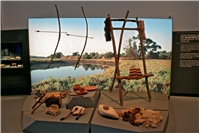 The prehistoric communities of Alcalar, their day-to-day life, the importance of death and its ritual, 5000 years ago.
The prehistoric communities of Alcalar, their day-to-day life, the importance of death and its ritual, 5000 years ago. -
The Roman Presence
 Testimonies of experiences and architectural elements of Roman villas and cisterns found in Portimão area.
Testimonies of experiences and architectural elements of Roman villas and cisterns found in Portimão area. -
The Islamic Presence
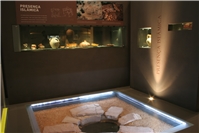 The Alcaria de Arge - a rural structure from the Islamic period (12th-13th centuries).
The Alcaria de Arge - a rural structure from the Islamic period (12th-13th centuries). -
Rio Arade, a Gateway between the Mediterranean and the Atlantic.
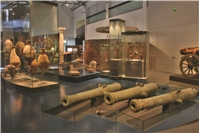 Traces that have emerged from the River Arade, as a place where cultures and civilisations crossed, bearing witness to an intense fluvial-maritime activity from prehistoric to modern times.
Traces that have emerged from the River Arade, as a place where cultures and civilisations crossed, bearing witness to an intense fluvial-maritime activity from prehistoric to modern times. -
Wood Felling
 The trunks were transported in carts from the Monchique mountains to the Portimão shipyards, located on the right margin of the mouth of the River Arade.
The trunks were transported in carts from the Monchique mountains to the Portimão shipyards, located on the right margin of the mouth of the River Arade. -
Portimão Shipyards
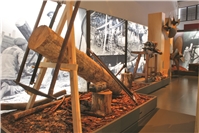 Memories and testimonies of the wooden shipbuilding processes and the different industries related to it.
Memories and testimonies of the wooden shipbuilding processes and the different industries related to it. -
Dried Fruits and Smokery. The Rural World in the Industrial Turn.
 The presentation of the fig transformation process, which resulted in Portimão's first great moment of economic expansion.
The presentation of the fig transformation process, which resulted in Portimão's first great moment of economic expansion. -
Manuel Teixeira Gomes - Traveller, Politician and Writer
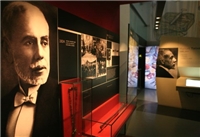 Biography of this remarkable Portimão citizen, who lived from 1860 to 1941. Businessman, writer, diplomat and President of the Republic between 1923 and 1925, he never ceased to cultivate the pleasure of writing and travelling.
Biography of this remarkable Portimão citizen, who lived from 1860 to 1941. Businessman, writer, diplomat and President of the Republic between 1923 and 1925, he never ceased to cultivate the pleasure of writing and travelling.


